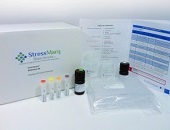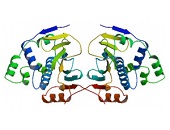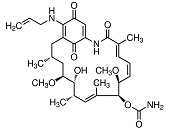HSP90: Molecular Weight
 IHC staining of inflammatory cells and epithelia mucosa in mouse colon tissues, using Anti-Hsp90 (clone: AC-16)
IHC staining of inflammatory cells and epithelia mucosa in mouse colon tissues, using Anti-Hsp90 (clone: AC-16)
The HSP90 family represents a group of well-conserved proteins with an average molecular mass of 90 kDa. There are two major cytosolic Hsp90 isoforms, the inducible Hsp90α1 (HspC1) and the constitutive Hsp90β (HspC3), commonly termed Hsp90 1,26. Hsp90 is the major soluble protein of the cell and most commonly located in the cytoplasm. Like many other chaperones, Hsp90 is a rather hydrophobic protein whose hydrophobicity further increases after heat shock 32,33. The HSP90 family members are encoded by a multigene family encompassing six genes and 11 pseudogenes in humans 26. Functional genes encoding HSP90 proteins map to human chromosomes 6, 11, 12, 14, and 16 26. The most studied genes are HSP90AA1 (HSPC1) and HSP90AB1 (HSPC3) encoding proteins that differ by eight amino acids. While Hsp90α1 (HspC1) represents the stress-inducible isoform, Hsp90β (HspC3) is a constitutively expressed protein. The genes are clustered on chromosome 14q32.32 and 6p12, respectively. Two transcript variants encoding different isoforms have been found for the HSP90A gene.



